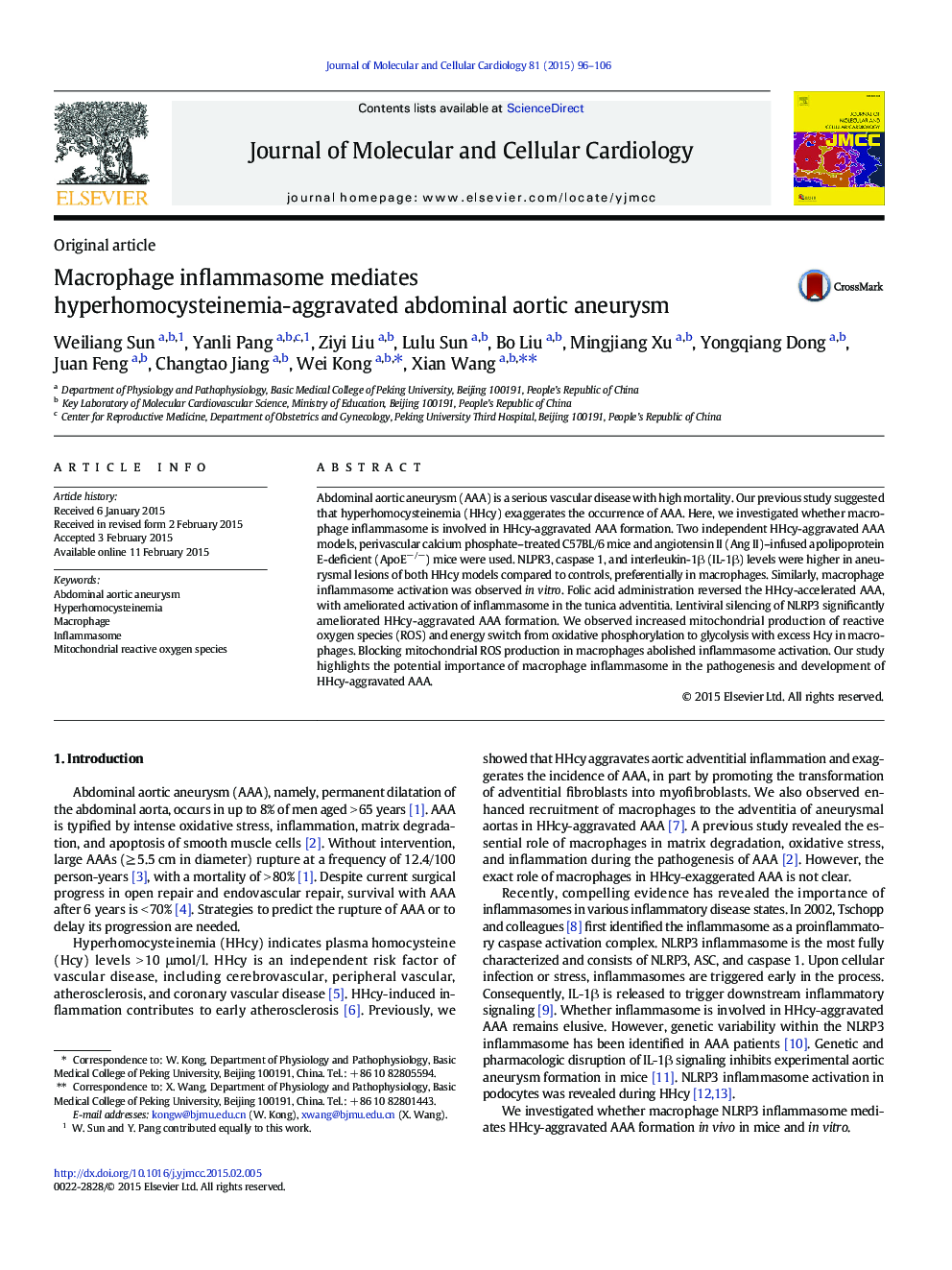| Article ID | Journal | Published Year | Pages | File Type |
|---|---|---|---|---|
| 2190502 | Journal of Molecular and Cellular Cardiology | 2015 | 11 Pages |
•Macrophage inflammasome is involved in HHcy-aggravated AAA, FA reverses the effect.•Hcy enhances inflammasome activation in macrophages in vitro.•HHcy exaggerates iNOS expression in adventitial macrophages.•Hcy-activated macrophage promotes the transformation of fibroblasts to myofibroblasts.•Mitochondrial ROS participates in Hcy-induced macrophage inflammasome activation.
Abdominal aortic aneurysm (AAA) is a serious vascular disease with high mortality. Our previous study suggested that hyperhomocysteinemia (HHcy) exaggerates the occurrence of AAA. Here, we investigated whether macrophage inflammasome is involved in HHcy-aggravated AAA formation. Two independent HHcy-aggravated AAA models, perivascular calcium phosphate–treated C57BL/6 mice and angiotensin II (Ang II)–infused apolipoprotein E-deficient (ApoE−/−) mice were used. NLPR3, caspase 1, and interleukin-1β (IL-1β) levels were higher in aneurysmal lesions of both HHcy models compared to controls, preferentially in macrophages. Similarly, macrophage inflammasome activation was observed in vitro. Folic acid administration reversed the HHcy-accelerated AAA, with ameliorated activation of inflammasome in the tunica adventitia. Lentiviral silencing of NLRP3 significantly ameliorated HHcy-aggravated AAA formation. We observed increased mitochondrial production of reactive oxygen species (ROS) and energy switch from oxidative phosphorylation to glycolysis with excess Hcy in macrophages. Blocking mitochondrial ROS production in macrophages abolished inflammasome activation. Our study highlights the potential importance of macrophage inflammasome in the pathogenesis and development of HHcy-aggravated AAA.
